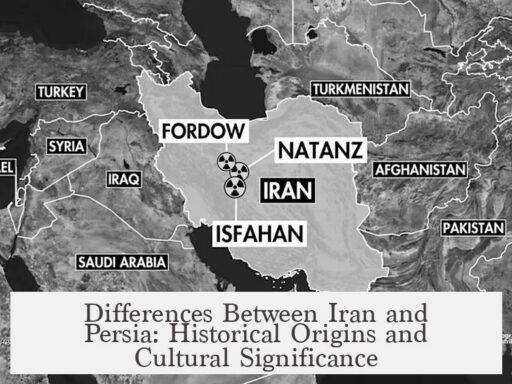Vietnam uses the Latin alphabet in its writing system primarily because of historical, linguistic, and colonial influences that differ from other former European colonies in Asia, such as Burma and Hong Kong. The adoption of the Latin-based script, known as Chữ Quốc Ngữ, replaced the complex and less accessible Chinese character-based systems previously in use, enabling wider literacy and educational development tailored to the Vietnamese language.
Historically, Vietnamese was written using Chinese characters called Hanzi. This writing system posed significant challenges. Vietnamese is an Austroasiatic language, which is structurally very different from Chinese, a Tibeto-Burman language. Because Classical Chinese was the base for literacy, Vietnamese people had to learn this complex system to read and write effectively. This made literacy difficult for the majority, limiting education and cultural development.
To address these challenges, the Vietnamese developed a set of adapted characters called Chu Nom around the 13th century. These represented native Vietnamese words while using a Chinese character-style system. Chu Nom fostered a golden age of Vietnamese poetry and literature since it better suited the language compared to Hanzi. However, Chu Nom still required knowledge of Chinese characters for literacy since many characters overlapped. Thus, the literacy hurdle was not fully overcome.
In the 17th century, Jesuit missionaries introduced a Latin alphabet transcription of Vietnamese known as Quốc Ngữ. The missionaries needed an accessible system to teach Christianity and literacy. Quốc Ngữ was a romanization, using Latin script to represent Vietnamese tones and sounds. This method was simpler than learning Chinese characters because it used familiar Latin letters combined with diacritics for tones. It made writing and reading Vietnamese much more efficient and easier to learn.
When France colonized Vietnam in the 19th and early 20th centuries, the French administration promoted and eventually enforced Quốc Ngữ as the official writing system. This shift replaced Chu Nom and Hanzi, creating a standardized writing system based on the Latin alphabet. The colonial government encouraged this because it streamlined administration, education, and communication under their control. It also helped improve literacy rates substantially because of the script’s simplicity.
Vietnamese lost any earlier indigenous script during centuries of Chinese dominance. Unlike languages such as Burmese or Hong Kong’s Cantonese, which retained scripts well-matched to their phonetics and linguistic structure, Vietnamese lacked a fully developed native writing system when the French arrived. In contrast, Burmese script closely fits Burma’s language structure, and Cantonese in Hong Kong is primarily written using Chinese characters, which remain functional and culturally entrenched. These languages continued using their traditional scripts due to cultural continuity and the alignment of scripts to their languages.
The Vietnamese situation was unique because its previous scripts (Hanzi and Chu Nom) were cumbersome and tied to Chinese literacy. This historical loss and the complexity of traditional scripts created a strong incentive for adopting a more practical and accessible Latin-based script when introduced by missionaries and colonial authorities. This adoption was less about colonial imposition and more about practical literacy needs and linguistic suitability.
In summary, these factors lead to why Vietnam uses the Latin alphabet today while other former European colonies in Asia retain their indigenous or Chinese character-based scripts:
- Vietnam historically relied on Chinese characters, which were not well suited for its Austroasiatic language.
- Chu Nom, a hybrid script, improved representation but still required Chinese literacy.
- Jesuit missionaries introduced Quốc Ngữ, a Latin-based script that simplified Vietnamese literacy.
- The French colonial administration promoted Quốc Ngữ to support governance and education.
- Other colonies like Burma and Hong Kong had indigenous scripts aligned to their languages, so there was no strong drive to replace them with Latin alphabets.
This unique combination of linguistic structure, historical script challenges, and colonial influences explains why Vietnam employs the Latin alphabet today, while other former Asian European colonies do not.
- Vietnam’s indigenous scripts were heavily influenced by Chinese characters, which complicated literacy.
- The Latin alphabet was introduced by Jesuit missionaries to simplify writing and reading.
- French colonizers institutionalized the Latin script for administration and education.
- Other Asian colonies retained native scripts due to better linguistic fit and cultural factors.
- Quốc Ngữ improved literacy and became the national writing system of Vietnam.
Why Does Vietnam Use the Latin Alphabet in Their Writing System, While Other Former European Colonies in Asia Do Not?
Vietnam uses the Latin alphabet today largely because the Latin-based Quốc Ngữ script was introduced by Jesuit missionaries and then fully adopted under French colonial rule to replace a complicated Chinese-derived writing system that didn’t suit Vietnam’s language. This contrasts sharply with colonial neighbors like Burma and Hong Kong, where local scripts remained dominant because they fit their languages well. But why did Vietnam take this unique path? Let’s dive into history with some fun twists.
Picture yourself in ancient Vietnam. You want to write down a poem or a story. What do you use? Originally, it’s the same tools as your Chinese neighbors: Hanzi—the intricate Chinese characters. However, the fit is awkward. Vietnamese is part of the Austroasiatic family, tonal and phonetic in ways quite different from the Tibeto-Burman Chinese language. Trying to wrestle meaning from Chinese characters feels like wearing shoes that are two sizes too small. Literacy remains scarce among the middle class because to read or write, you handily need to master Classical Chinese first.
To solve this, by the 13th century, Vietnamese scholars cleverly invented Chu Nôm: a hybrid system that borrowed existing Chinese characters but also created thousands of new ones tailored specifically to Vietnamese sounds and meanings. Imagine inventing a new alphabet by mixing Lego pieces and making some new ones—incredibly time-consuming but highly creative! For instance, they combined components like 天 (heaven) atop 上 (above) to pinpoint a Vietnamese concept, or cleverly merged phonetic and semantic clues. This innovation ushered in a golden age of Vietnamese poetry and literature, blossoming with identity and pride.
Yet here’s the kicker: even Chu Nôm demanded knowledge of Chinese characters first. So, while notionally Vietnamese, the system ultimately didn’t solve the literacy bottleneck. Contrast this with Korea, where in the 15th century, scholars developed Hangul—a brand-new phonetic alphabet crafted to match Korean sounds without relying on Chinese. This innovation made literacy accessible for everyone, not just the elite.
Enter the Jesuits in the 17th century—missionaries with a knack for problem-solving and linguistic finesse. Their mission? Teach and convert. Their obstacle? Complex scripts that put literacy miles out of reach for ordinary Vietnamese. The solution? Develop Quốc Ngữ, a romanized version of Vietnamese using the Latin alphabet. Here’s a side note: think of this as the 17th-century equivalent of inventing an app that suddenly makes learning a language 10 times easier. Quốc Ngữ was designed with a goal of ease and clarity, stripping away the complexity of Chinese characters while preserving the tonal nature of Vietnamese by adding diacritics.
Fast forward to French colonial dominion over Vietnam. The French, of course, loved efficiency—especially when it helped them govern a distant land. Quốc Ngữ fit perfectly: it simplified education, administration, and communication. The French systematically replaced Chu Nôm with Quốc Ngữ, turning the Latin script into the exclusive writing system for Vietnamese by the 20th century. This was not just an educational reform; it was a linguistic transformation facilitating mass literacy and modern nation-building.
Now, why didn’t this Latin script revolution happen across Asia’s other European colonies, like Burma and Hong Kong? Well, these places had pretty good indigenous scripts already matched to their languages. For instance, Burma (Myanmar) has its own script, adept at expressing the nuances of Burmese, much like Thai, Lao, and Khmer. These systems neatly encode the sounds and tones, making any switch to an alien alphabet unnecessary and cumbersome.
Meanwhile, Hong Kong’s main spoken language is Cantonese—a language sharing a logographic written system with Mandarin Chinese. Despite their significant differences, both languages use Chinese characters, preserving a cultural continuity. This meant there was little practical incentive to switch to Latin script for everyday writing there, even under British rule. The Latin alphabet just wasn’t a pressing need—local scripts worked, and people were accustomed to them.
Interestingly, Vietnamese didn’t have this luxury. Before Chinese influence, it likely used an indigenous script similar to Thai or Khmer, but this was lost under centuries of Chinese rule. So when missionaries introduced a Latin alphabet, it filled a unique gap: a system that fits Vietnamese phonetics better than Chinese characters ever could, and without the cumbersome barrier of learning Classical Chinese.
How did this transformation benefit Vietnam? Simply put: literacy skyrocketed. With Quốc Ngữ, learning to read became more approachable for masses, paving the way for education reforms, printed newspapers, and eventually, nationalist movements fueled by a literate public. This accessibility was crucial for modern communication, cultural preservation, and political identity-building.
Here is a quick comparison table to highlight key points:
| Feature | Vietnam | Burma / Hong Kong |
|---|---|---|
| Historical Writing System | Chinese characters (Hanzi) and Chu Nôm hybrid | Indigenous Burmese script; Chinese characters for Cantonese |
| Suitability to Language | Poor fit; Austroasiatic vs. Tibeto-Burman | Good fit to Burmese and Cantonese phonetics |
| Colonial Influence | French introduced and imposed Latin alphabet (Quốc Ngữ) | British maintained indigenous scripts |
| Literacy Impact | Increased dramatically due to simplified script | Stable literacy using traditional scripts |
What lessons does this history offer? It shows how writing systems don’t just reflect language, but power, culture, and identity. The Vietnamese adopted the Latin alphabet not because it was foreign, but because it made reading and writing faster, easier, and more accessible for their unique language structure. Meanwhile, neighboring countries held on to their traditional scripts that served them well.
So, next time you wonder why Vietnam writes with Latin letters but Burma or Hong Kong doesn’t, remember it’s a story of linguistic fit, colonial history, and educational innovation. The Latin alphabet in Vietnam is a brilliant example of how a writing system adapts to the needs of a language—and a people hungry for literacy and progress.
Curious how diacritics in Quốc Ngữ specifically capture Vietnamese tones or want to explore examples of Chu Nôm characters? That’s a tale for another post, full of fascinating scripts and language detective work. For now, consider this: the alphabet isn’t just letters on a page. It’s a bridge—connecting the past to the present, and opening doors to the future.




